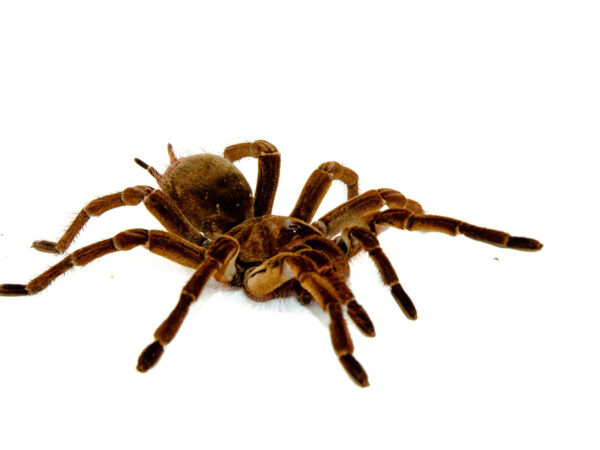- “venezuelan green bottled blue tarantula (chromatopelma cyaneopubescens)” already exists in your wishlist
venezuelan green bottled blue tarantula (chromatopelma cyaneopubescens)
$119.99
Venezuelan Green Bottled Blue Tarantula (Chromatopelma cyaneopubescens): A Must-Have for Spider Enthusiasts
If you’re a fan of vibrant colors and unique pet personalities, the Venezuelan Green Bottled Blue Tarantula (Chromatopelma cyaneopubescens) should be at the top of your list. Known for its eye-catching coloration and manageable temperament, this tarantula is a favorite among beginner and experienced keepers alike.
Native to the arid scrublands of northern Venezuela, this species stands out in both appearance and behavior. Its combination of shimmering blue legs, green carapace, and vivid orange abdomen gives it a jewel-like appearance that few tarantulas can match.
Appearance and Coloration Venezuelan Green Bottled Blue Tarantula (Chromatopelma cyaneopubescens)
The Venezuelan Green Bottled Blue Tarantula is arguably one of the most beautiful tarantulas in the hobby. It boasts:
-
Metallic blue legs
-
A vibrant green carapace (head region)
-
A fiery orange abdomen with dark striping
These colors become more intense after each molt, especially in juveniles transitioning to adulthood. Even as spiderlings, their colors are already striking, making them popular with collectors from an early age.
Behavior and Temperament Venezuelan Green Bottled Blue Tarantula (Chromatopelma cyaneopubescens)
Despite their exotic appearance, these tarantulas are relatively docile. While not ideal for handling due to their speed and skittish nature, they’re not overly aggressive or prone to biting. They tend to bolt rather than defend, making them ideal for viewing rather than interaction.
The Venezuelan Green Bottled Blue Tarantula is known for webbing extensively in its enclosure. It creates intricate silk tunnels and sheets that not only serve as hiding spots but also offer fascinating behavior for keepers to observe.
Enclosure and Care
Setting up a proper environment is essential for your tarantula’s health and longevity. They thrive in dry conditions with good ventilation. Here are a few care basics:
-
Enclosure size: 3–5 gallons for adults
-
Substrate: Dry coco fiber or a sand-soil mix
-
Humidity: 60–70%, but avoid overwatering
-
Temperature: 75–85°F
-
Hiding space: A cork bark slab or artificial tunnel
Because they are web builders, giving them anchor points like fake plants or branches will allow them to express natural behaviors. Their extensive web structures are a highlight of ownership.
Feeding and Diet
The Venezuelan Green Bottled Blue Tarantula has a hearty appetite. It enjoys a diet of:
-
Crickets
-
Roaches
-
Mealworms
-
Occasional hornworms for variety
Adults should be fed once a week, while spiderlings can eat twice per week. Always remove uneaten prey after 24 hours to avoid stress or injury.
Lifespan and Molting
This tarantula is long-lived, especially females who can live up to 15 years. Males typically live 3–5 years. Like all tarantulas, they molt regularly to grow. Molting frequency decreases with age but is more frequent during their juvenile stages.
Signs of an upcoming molt include refusal to eat, sluggishness, and a duller color. During this period, avoid feeding or handling.
Where to Buy
If you’re looking to add this stunning spider to your collection, check out onestopreptileshop.com. They offer captive-bred Venezuelan Green Bottled Blue Tarantulas at various life stages—from spiderlings to sub-adults—with fast and secure shipping across the U.S.
Whether you’re a beginner looking for your first tarantula or an expert looking to add color to your collection, this species is a true showstopper.
Final Thoughts
The Venezuelan Green Bottled Blue Tarantula (Chromatopelma cyaneopubescens) is an amazing addition to any exotic pet collection. With its bold colors, fascinating web-building behavior, and relatively low maintenance needs, it offers everything an enthusiast could hope for in an arachnid pet. As long as it’s provided a proper enclosure and diet, this species will thrive in captivity and provide years of fascination and beauty.








Reviews
There are no reviews yet.